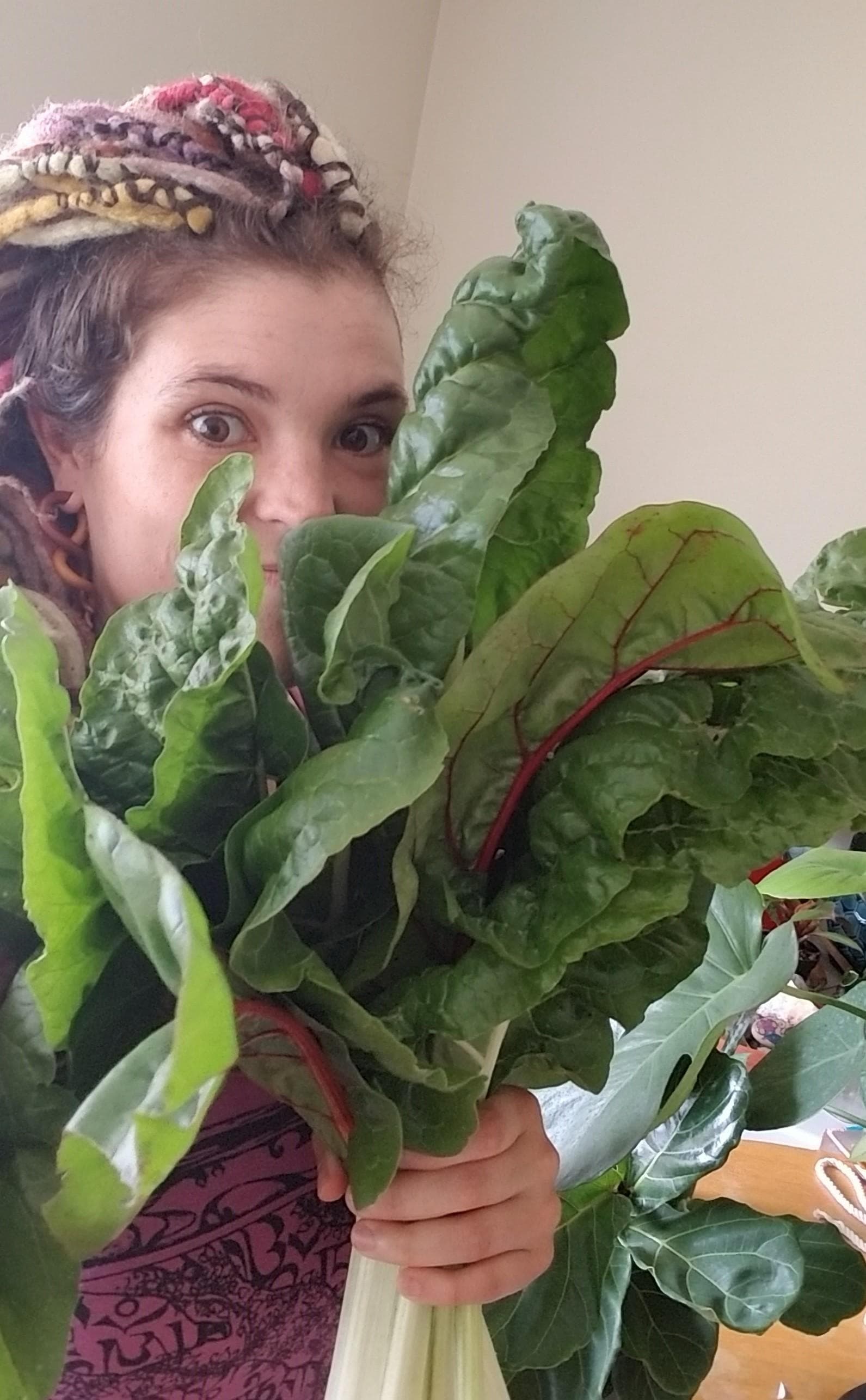Converting Grass to Self Sustained Garden
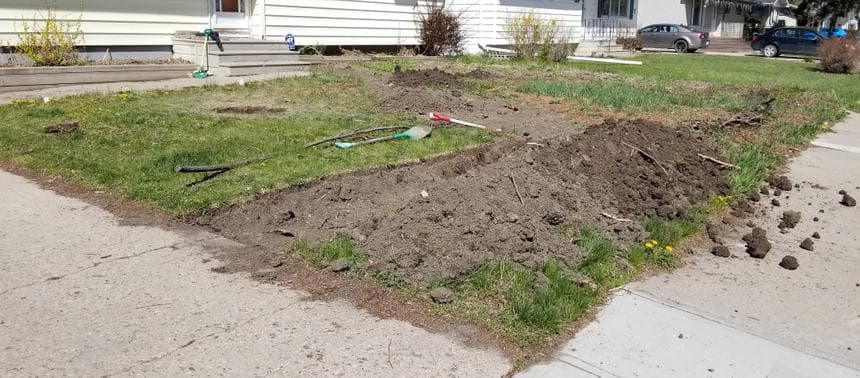
I had been planning to convert my front yard to a garden for years. Each year I slowly chipped away at the grass and my husband's sanity, bit by bit, metre by metre, I expanded our food growing space and eliminated the grass no one wanted to look after anyway. The front lawn was my largest area of south-facing real estate. There was only one real hitch in my plan;
There was a large, healthy pine tree smack in the middle of my front yard sucking water and shading my growing space.
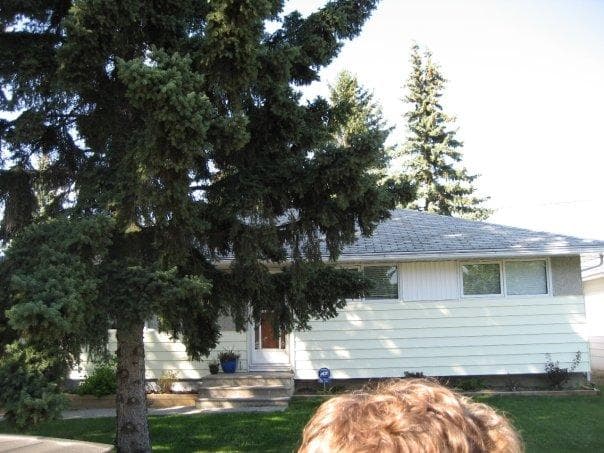
I didn't want to kill the tree for my garden. I worked around it, until January 2019 when a collapsing sewer line forced us to remove the tree so we could replace the line. The tree was positioned directly on top of the line... in fact, it was the main source of collapse as the roots grew through the waxed cardboard pipe.
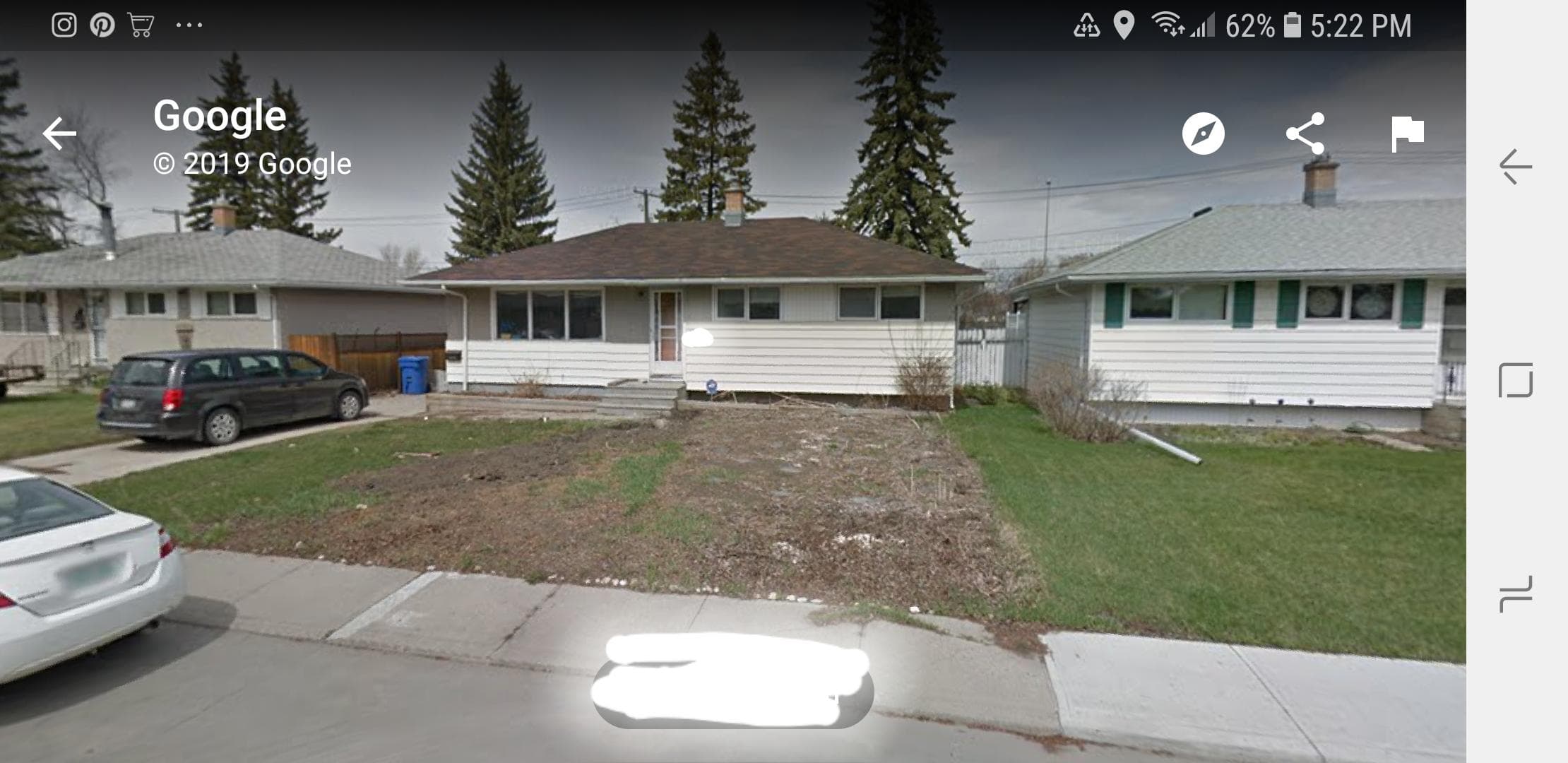
Suddenly I found myself with an almost blank slate and an abundance of glee to temper the sorrow of a tree that met an early end. Not only did I have a nearly blank slate, but I also had an abundance of branches and logs to give back to the earth! I had had a plan in mind for how I would design the front yard if ever that tree came down, it was time to put thought to action.
My front yard enjoyed a shallow, even grade down toward the sidewalk, fairly typical for an urban dwelling. In the city, we design our landscape to shunt water away from our houses (basements) and toward the city's water catchment system. Then we pipe it back to our house to spray out of a hose to water what grows. It seemed a tad inefficient to me. I'd rather catch that water (away from the house of course) and sink or store it where it falls, slow it down, interrupt it on its path to the gutter and save it up for the plants that grow in my yard. This involves utilizing the contours of your land to best effect, which in the case of my front yard was fairly straight forward. The grade ran straight from the house down to the sidewalk (from the North to the South). If I wanted to slow and catch water all I needed to do was cut trenches perpendicular to that grade and fill them with something that holds water. I set about cutting lines that ran West to East, then lifting the sod along my intended path and loosening up the hard-packed clay beneath. Had I intended to remove all of the grass, this would have been a TON of work, but I had been researching permaculture principles and methods for a few years and I had an idea to cut the amount of work necessary to convert lawn to garden.
I knew I wanted to incorporate hugelkulture methods to utilize the nutrients stored up in the tree we had cut down, and I knew I did not want to dig up an entire yard worth of grass. That grass ALSO stored nutrients I would love to utilize. My answer was to place my branches, manure, compost, eggshells, leaves, just generally all of the odds and ends of yard waste I could find or generate, along the grass where I wanted the beds I would plant in to be, just on top of the grass. I started by planning out where my two largest plants would go - a pair of pear trees - planted them, then proceeded with the rest of my plan. When I dug the trenches, I took the grass from the trench area and deposited it * *upside down** on top of the branches of my planned beds. The dirt from the trenches then was shovelled on top of the upside-down grass clumps to bury all of it.
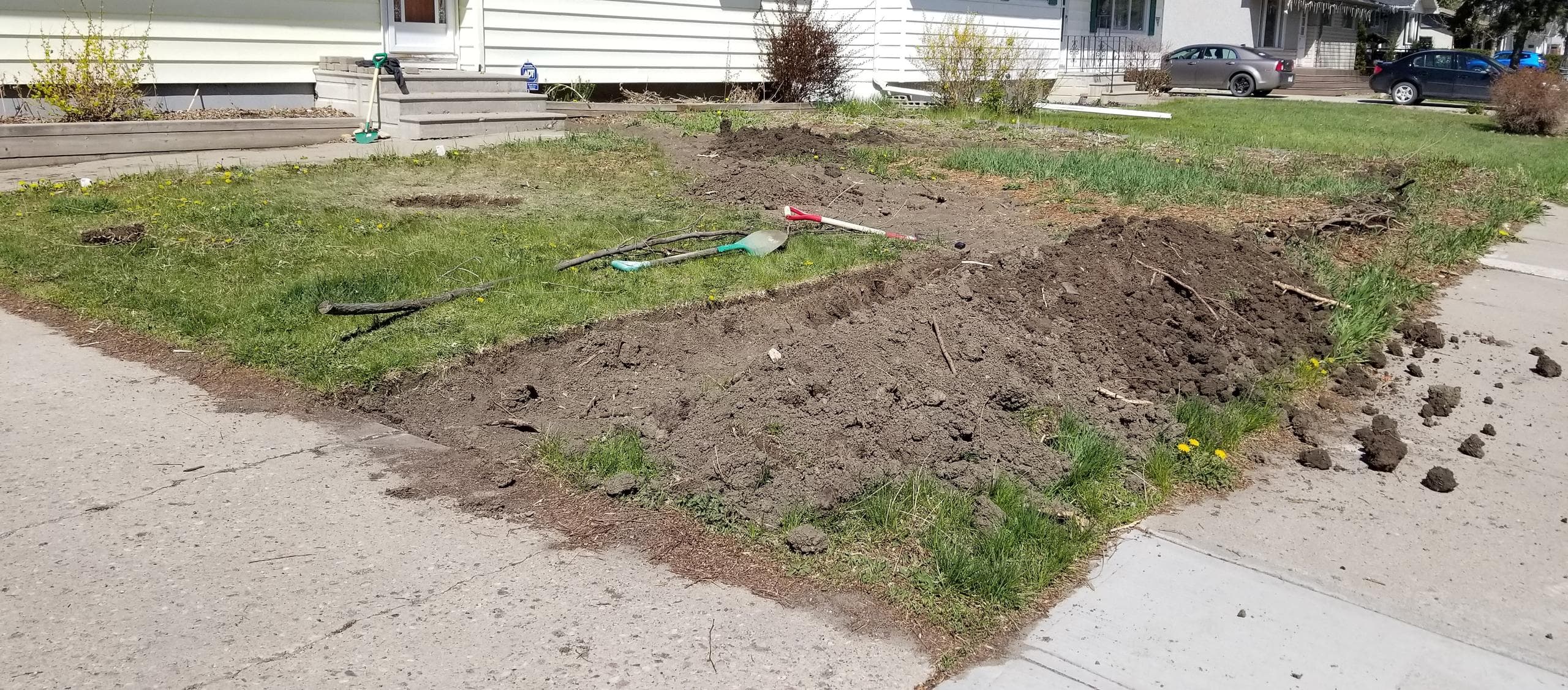
Once I had a trench from one end of the yard to the other meeting up with the trench that ran from downspout to sidewalk along the eastern side of my yard, I filled the trench with mulch and mulched the one long hugelkulture bed I had made. I used cedar mulch, which is kind of expensive but smells amazing and tends to drive away particular critters who don't like the smell, but you could use leaves, arborist's mulch, and fill with branches/logs to cut down on the amount of mulch required. The goal is to fill the trench with organic matter that holds water and breaks down into nutrients for your garden. This stores water, slows the water so that it may sink deep into the ground where your deep-rooted plants can access it, and filters it as it flows through. It also serves as a walking path.
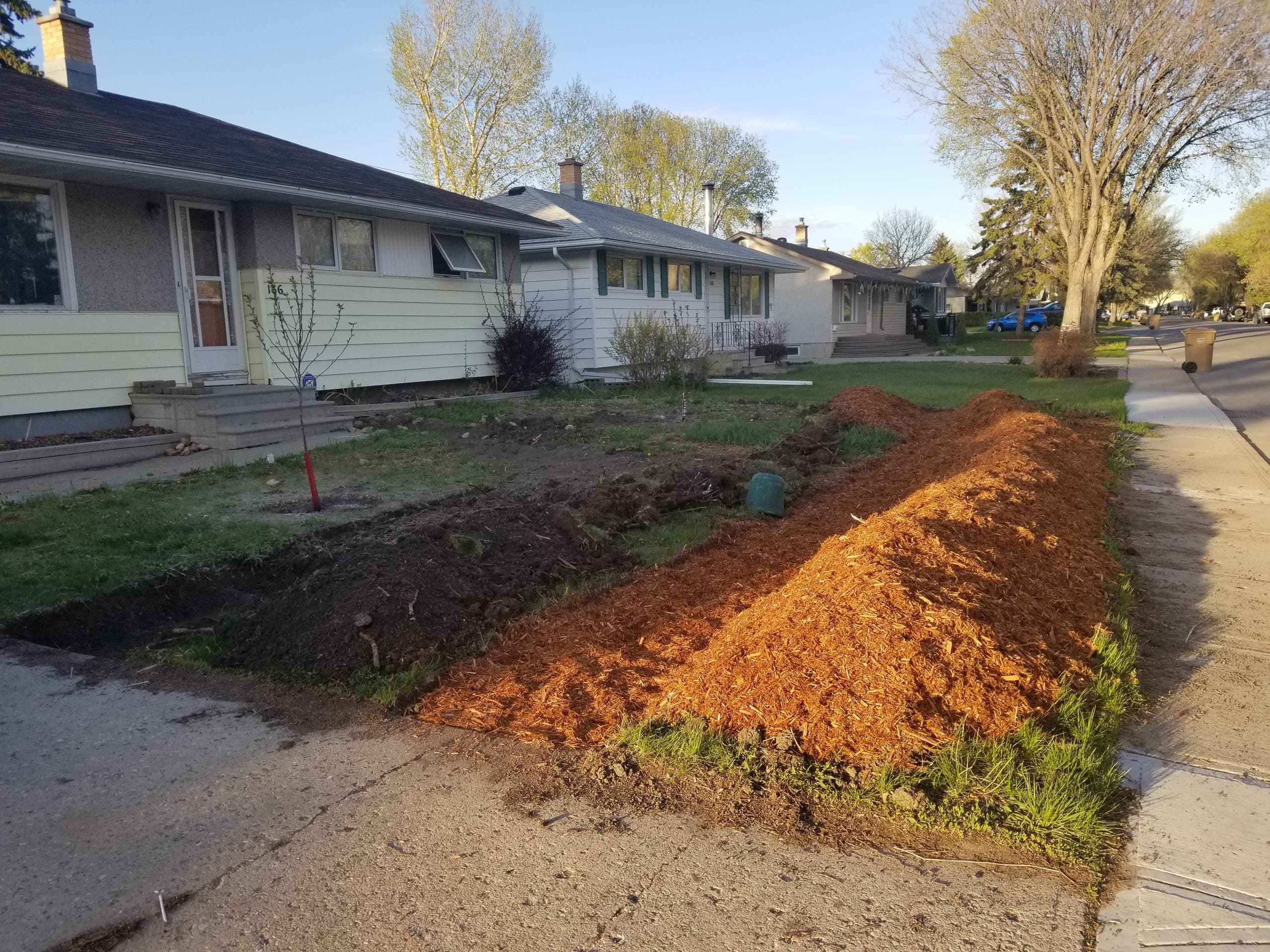
I continued row by row (three plantable rows in total) until I reached my pear trees. Around the pear trees, I piled the detritus that made up the middle of every other row but it built up a hill around the drip line of the trees instead of just a simple straight row. This serves the function of diverting all water that falls upon the area occupied by the tree to the roots of the tree. Fruit trees require a lot of water. They will also likely push roots into the area under the mulched trenches to gain access to more water, as will the perennial fruiting bushes I have planted among the rows.
The bushes will take a few years to fill in, especially if I keep forgetting to protect them from the rabbits through winter. This leaves a lot of open space, and open space will inevitably be filled by nature. Most people refer to those plants as weeds, I view them a little differently (they're nutrients and rabbit food) but still don't want my garden full of them. In the gaps between long-lived food-bearing bushes and trees, I planted my annual garden. On year one this garden bore a hefty harvest, far more than I expected out of a very new set up, and I barely had to water all summer! In permaculture concepts, ground cover is very important. You lose a lot of water through evaporation if your soil is bare. It also impacts the microbial life within your soil for it to be bare, and mulch itself provides nutrients as it breaks down. My ground cover in the first year began as cedar mulch but that was only until my lettuce sprouted. I had lettuce coming out of my ears that year! Lettuce everywhere. I had friends coming weekly to take bags and bags and bags of lettuce to eat, to store, and to share with others. After transplanting tomatoes and squash, planting out cucumbers, carrots, beans, peas, etc, I just sprinkled lettuce and calendula everywhere bare ground showed through. Everything thrived. The ground stayed moist. My watering ended when the seeds germinated and grew to an inch or two in height - about mid-June.

We left for three weeks that summer. I tasked a couple of friends with lettuce harvesting, but other than that the garden was completely ignored for three weeks from the middle of July to early August, arguably the hottest weeks of the summer with no added water and no weeding. My previous year's garden would have bit it hard, thistle would have been all that remained. This garden? The tomatoes in the front row were as high as my head when we returned, and that was just as high as my stakes would hold them, another five feet of vine trailed along the side of the hill from every single plant. It was WILD! My paths were all but obliterated by squash vines bearing several squashes each. There were calendula flowers EVERYWHERE.
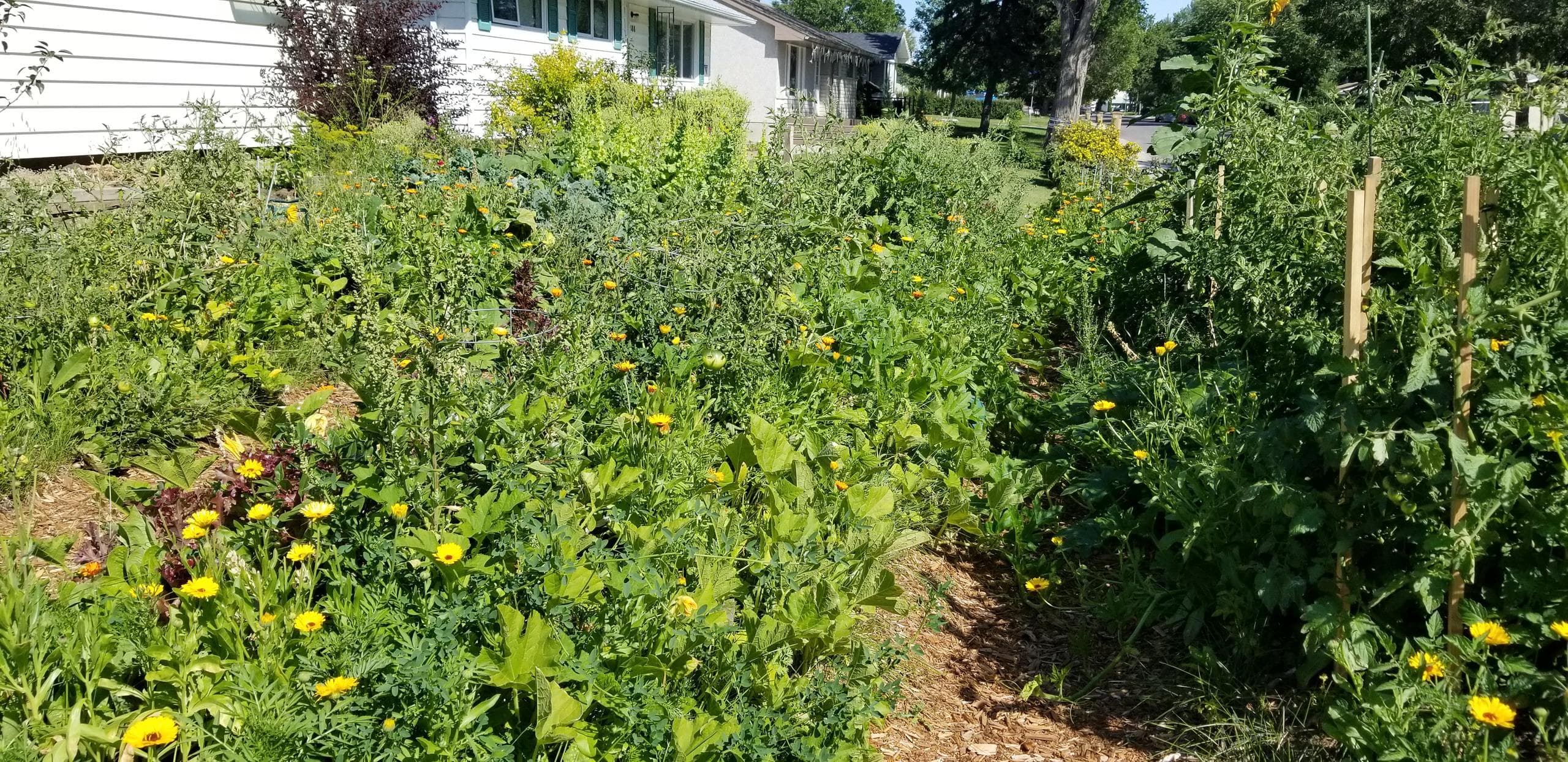
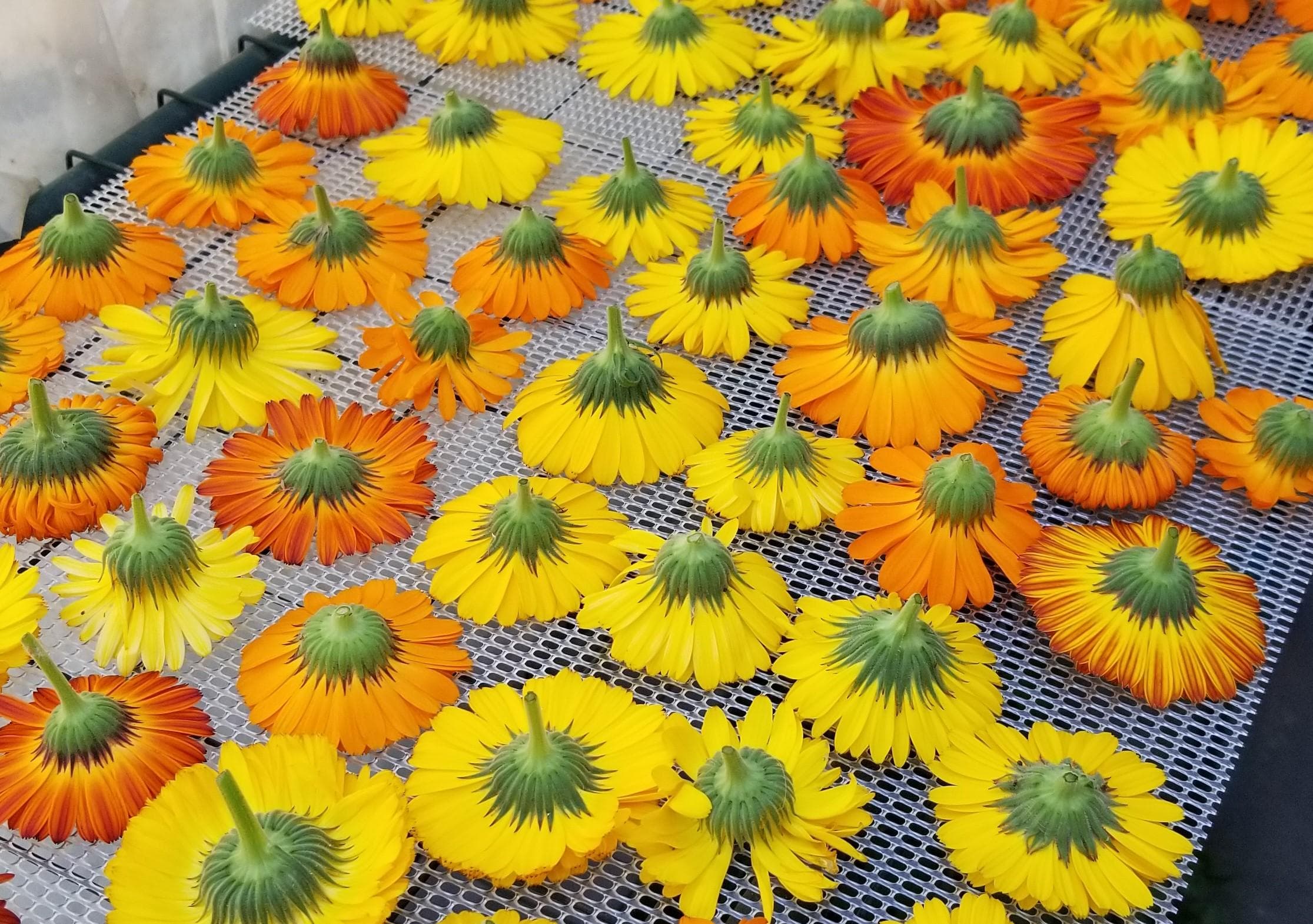
When harvest time came, I had more tomatoes, lettuce, chard, kale, calendula, and squash than I knew what to do with. I had done next to nothing in that garden since mid-June when I stopped watering.
This year was even less work as the system was already in place. We started the spring off with the trenches LOADED with snowmelt, and the trees and bushes have put out an astonishing amount of new growth. If I protect the bushes from the rabbits this winter I should have an abundance of cherries, haskaps, and gooseberries out of it next year! I was a little complacent last year since they'd left my completely-open-to-rabbits garden alone all summer and they ate most of the bushes nearly to the ground in February. They survived just fine, but no berries this year. I also had some yellowing of particularly heavy feeding plants that would indicate a lack of nitrogen in my system, which is completely normal when wood breaks down. It ties up nitrogen initially but releases it when that particular process is complete. Typically this occurs in year one or two of breakdown and resolves after that, leaving an abundance of nitrogen for the growing plants.
It usually takes about 3 years to establish a system like this and get it rolling well, and it just gets better and better with age. I am looking forward to years of nearly effortless food to come. The leaves stay where they fall. The greens get shredded and distributed as mulch. Pruning, cutting, weeding, it all gets dropped back into the system to become nutrients for the plants that stay. The soil that was once hard, compacted clay has already become much easier to work in, much more filled with organic material. I still need a few feeder-focused plants (like comfrey) in the system, I still have grass growing up from the edges of the mounds (if I had been more diligent in covering the edges of the mounds this wouldn't have happened), it's by no means complete, but it's certainly functional and well on its way! Now I'm moving on to the back yard because I just can't get enough of growing food.
Cheers!
